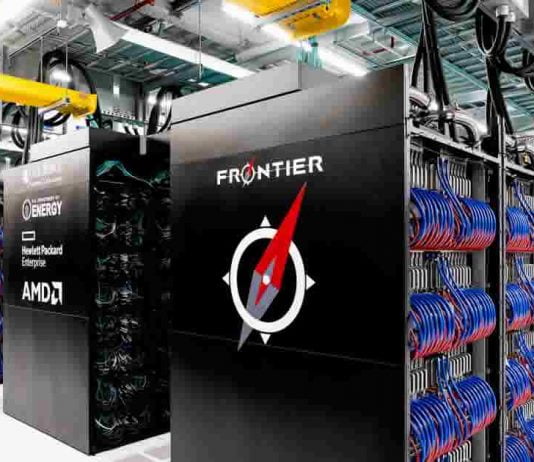The TOP500 list of supercomputers from June 2023 does not have many surprises, with the Frontier at the Oak Ridge National Laboratory (ORNL) remaining the top-ranked supercomputer. Developed by AMD and Hewlett Packard, the Frontier is the only true exascale model system on the list, with a maximum performance (Rmax) of 1,194 PFLOPS and a peak performance (Rpeak) of 1,679.82 PFLOPS. It has 8,699,904 cores and consumes 22,703 kW of power.
The second-place supercomputer is the Supercomputer Fugaku in Japan, with a significantly lower Rmax and Rpeak of 442.01 and 537.21 PFLOPS respectively. The rest of the top 10 includes supercomputers from Finland, Italy, the United States, and China. Notably, the LUMI supercomputer in Finland, developed by the same team as the Frontier, ranks third.
It’s worth noting that the anticipated Aurora, a mainframe for the Argonne National Laboratory, is missing from this list, despite expectations of it having over 2 Exa-FLOPS of computing power.
The new entry to the list is in the eleventh place, a Microsoft Azure system with a performance of 53.96 PFLOPS, pushing the Juwels Booster, the most powerful mainframe in Germany, to the 13th position. This Azure system, like the Frontier, uses AMD’s Epyc processors and Instinct MI250X accelerators.
In terms of processors, AMD’s Epyc processors are now as popular as Intel’s Xeons for new systems on the list. This is a significant achievement for AMD, given that Xeons have long been the first choice for high-performance computers.
On the geographical distribution of the supercomputers, most of them are located in the USA and China. However, China’s share is decreasing, partly due to the country no longer reporting data for its most powerful systems, and the trade blockade making the construction of new systems with components from the USA significantly more difficult.
As for the Green500 list, it still has the same frontrunner, a system called Henri, which is operated by the US research institute Flatiron Institute. Thanks to an upgrade with Nvidia’s H100 computing GPU, it currently achieves 65,396 GFLOPS/W, which is half a percent better than the value reported in November 20221.
For the most accurate and detailed information, you may want to directly check the TOP500 and Green500 websites or their official reports.


